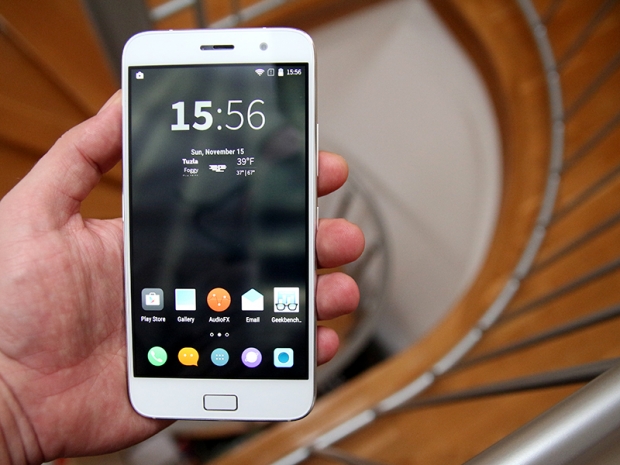Index
Lenovo ZUK Z1 Specs and Performance
The ZUK Z1 has a killer spec, but some chip geeks might not be too happy with it. The reason is the Qualcomm Snapdragon 801 processor, which was used on a number of 2014 flagships. It packs four custom 32-bit cores and Adreno 330 graphics. However, despite its age, the good old 801 still packs a punch and manages to outpace 64-bit Cortex-A53 octa-cores used in many mid-range phones. Sure, a Snapdragon 810 or 808 would have been better, but let’s not get ahead of ourselves.
- Lenovo ZUK Z1 specs:
- SoC: Qualcomm Snapdragon 801 (MSM8794AC), 28nm
- CPU: Four Krait 400 cores up to 2.5GHz
- GPU: Qualcomm Adreno 330 up to 578MHz
- RAM: 3GB LPDDR3 933MHz
- Storage: 64GB eMMC 5.0 internal storage (single partition), non-expandable
- Display: 5.5-inch 1080p IPS panel
- OS: Android 5.1.x/ Cyanogen OS 12.1
- Rear camera: 13-megapixel Sony IMX214 sensor, f/2.2 aperture, OIS
- Front facing camera: 8-megapixel OmniVision OV8865
- Battery: 4100Ah lithium polymer, non-removable
- Dimensions: 152 x 78 x 8.5 mm
- Weight: 175g
- WiFi and Bluetooth: 802.11b/g/n/ac WiFi and Bluetooth 4.1
- Sensors: ambient light, direction, accelerometer, compass, proximity, gyroscope, hall, GPS, A-GPS. GLONASS, BeiDou
- SIM card: dual SIM (nano SIM), dual standby, dual 4G
- Other noteworthy features: FM radio, USB Type-C
- Network support:
2G: GSM 850/900/1800/1900MHz
3G: WCDMA 850/900/1900/2100MHz
4G: TDD-LTE 1800/2100/2600MHz (B38 / B39 / B40 / B41), FDD-LTE (B1, B3, B7) (Make sure to check regional compatibility prior to making a purchase)
So, apart from the 2014-vintage processor, does anything else stand out? The oversized battery is definitely a nice touch, especially when you consider that it didn’t add much weight or thickness. Both SIM slots are 4G-capable.
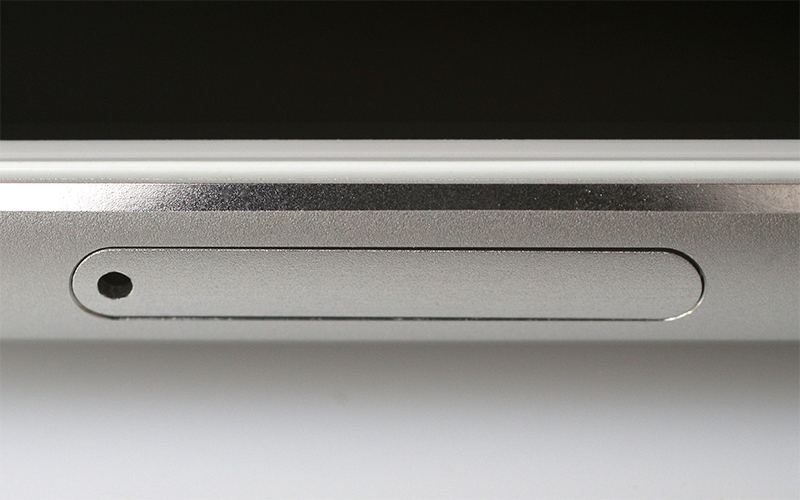
Lenovo’s decision to offer a single version of the ZUK Z1 with 64GB of integrated storage is a bit puzzling. We are confident there would be no shortage of demand for a marginally cheaper 32GB version.
The camera is based on Sony’s IMX214 sensor, the most popular 13-megapixel imaging sensor on the planet. Unfortunately, it’s mated to a slow f/2.2 aperture, but it makes up for it with the addition of optical image stabilization. For now, let’s focus on some dry benchmarks.
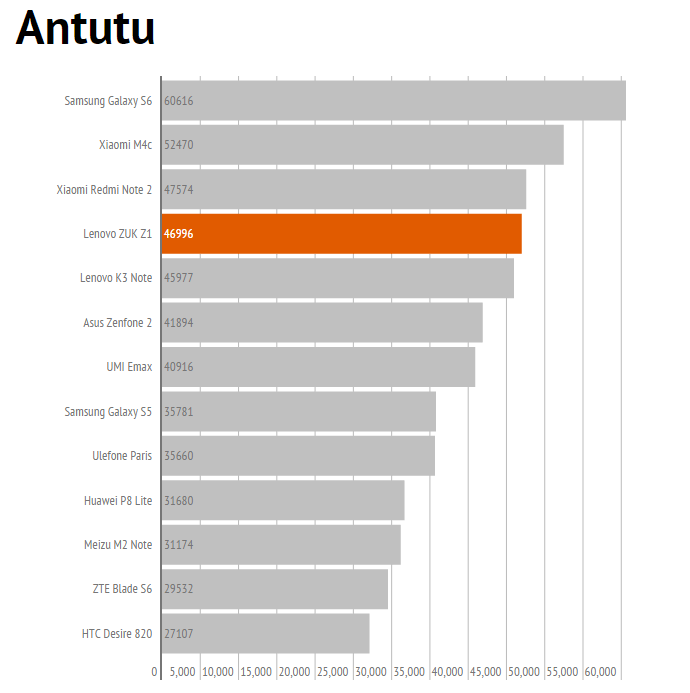
In Antutu, the ZUK Z1 scores 46996, on a par with last year’s flagships and new mid-range devices based on MediaTek octa-cores.
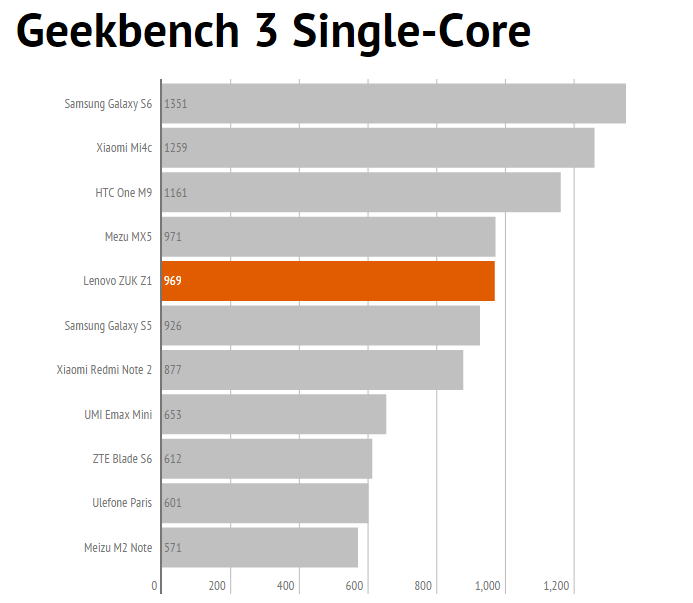
The Geekbench single-core score is quite good, although not on a par with Cortex-A57 chips.
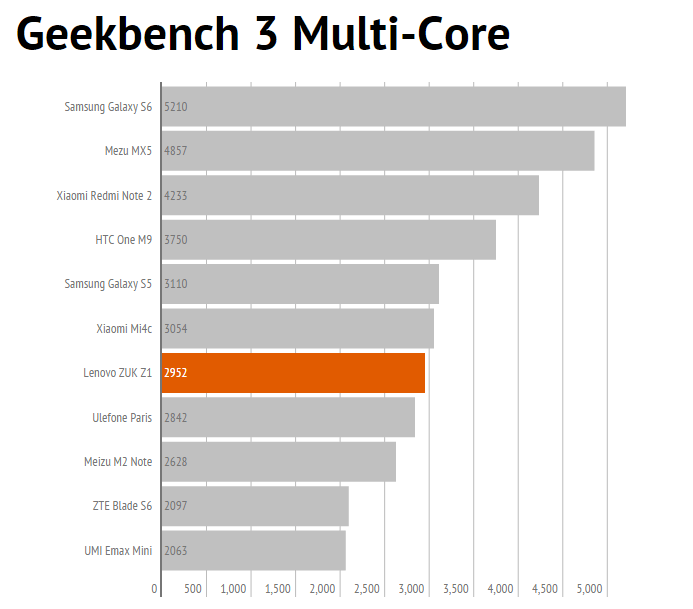
However, the Snapdragon 801 can’t keep up with much cheaper Cortex-A53 octa-cores in multi-core tests.
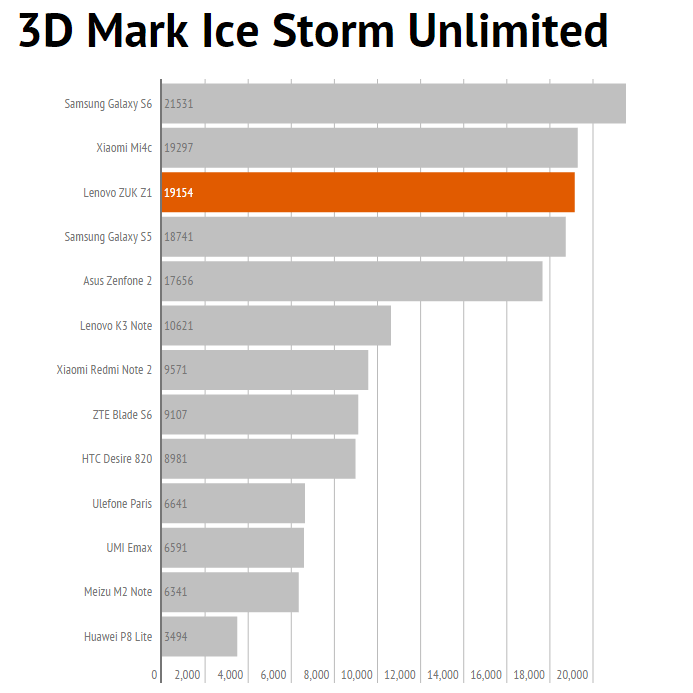
The Adreno 330 GPU manages to pull ahead of mid-range chips in 3D Mark. It’s twice as fast as SoCs with Adreno 405, Mali T760 and Imagination Technologies 6100-series GPUs. The score is almost on a par with the Adreno 418, employed in the Snapdragon 808.
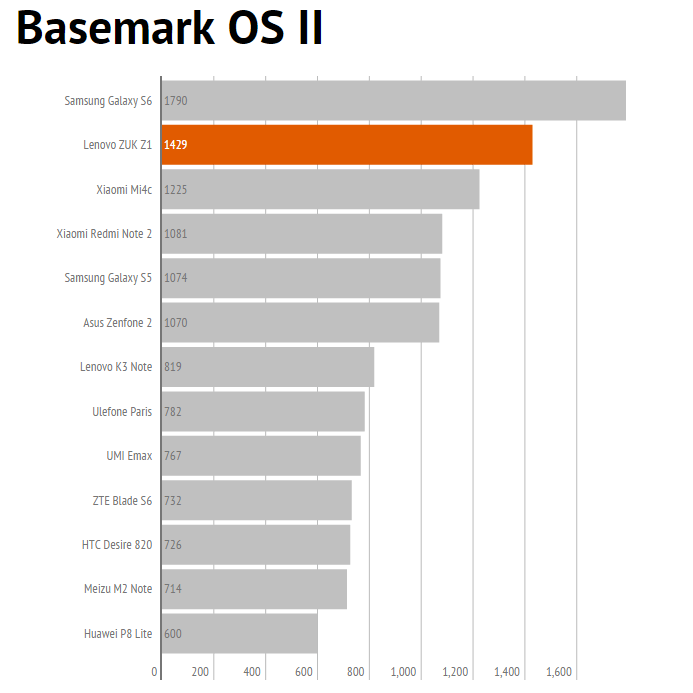
Basemark OS II looks at overall system performance and loves good storage and loads of memory. Therefore, the ZUK manages to outpace the Snapdragon 808-based Xiaomi Mi4c.
Bottom line: Qualcomm’s Snapdragon 801 isn’t the newest chip out there, but it still delivers excellent performance, on a par with the 20nm Snapdragon 808. The GPU is much faster than anything you can get in budget phablets like the Xiaomi Redmi Note 2 or Lenovo’s own K3 Note.
It’s obvious that ZUK opted for the older chip due to cost considerations, but the end-user won’t be missing out on much. Bear in mind that the OnePlus X is based on the exact same chip. Would the Snapdragon 808 be a better choice? Well, it’s a 20nm processor and it should end up more efficient, but in terms of sheer performance, the difference is negligible in real life.

